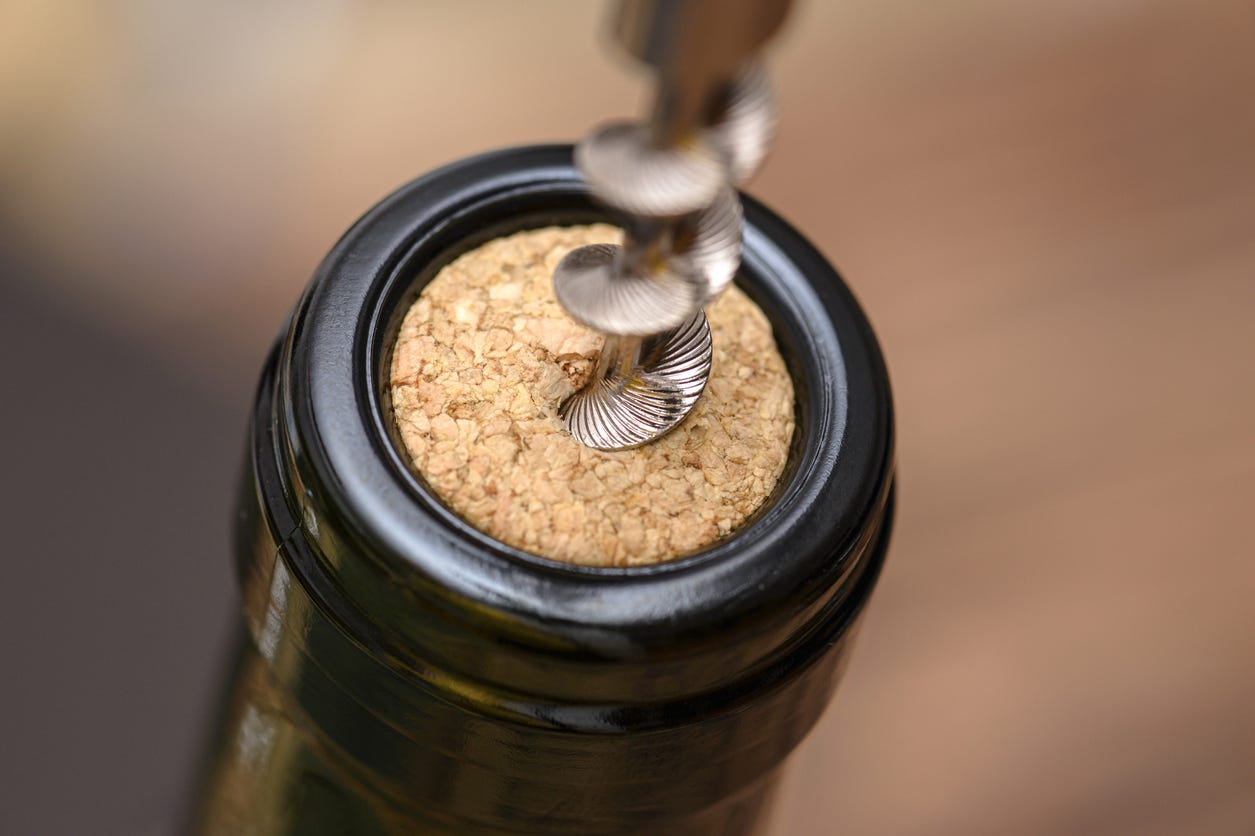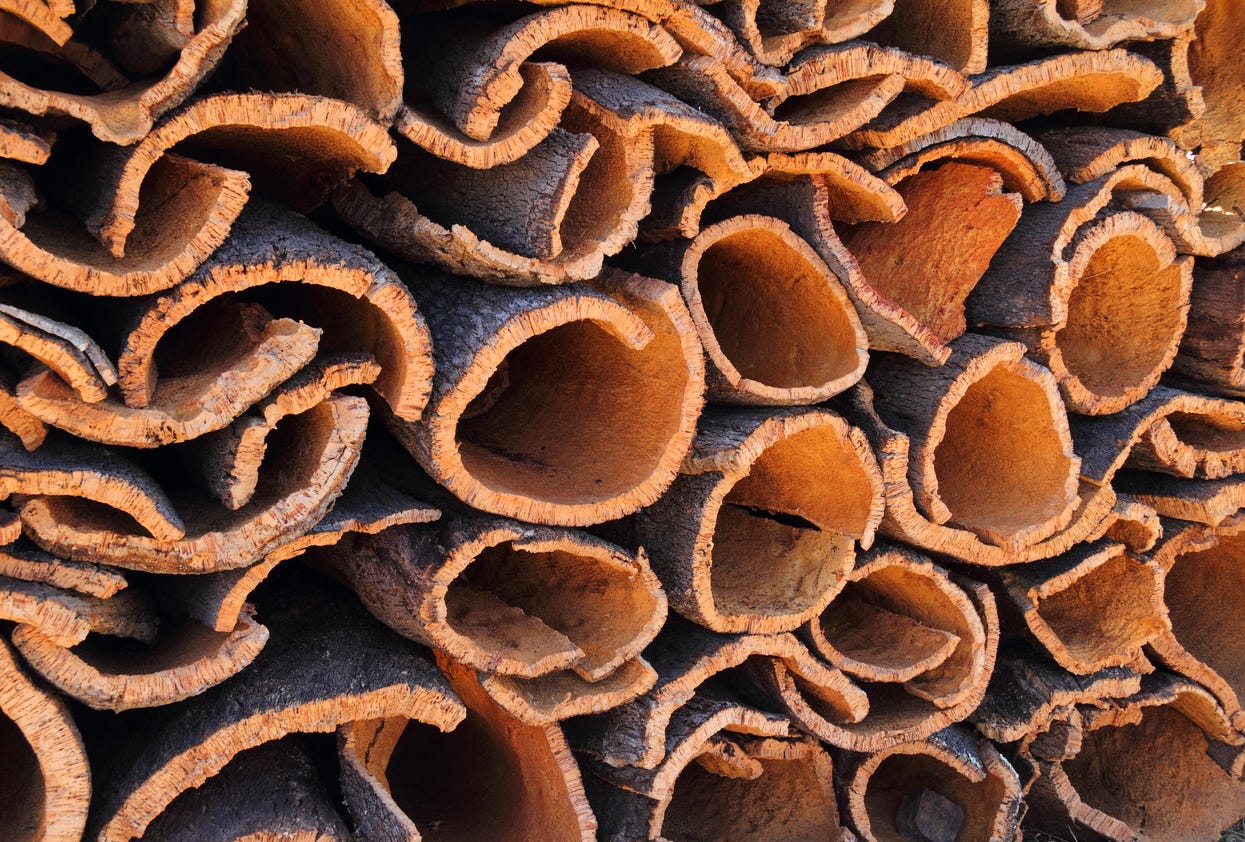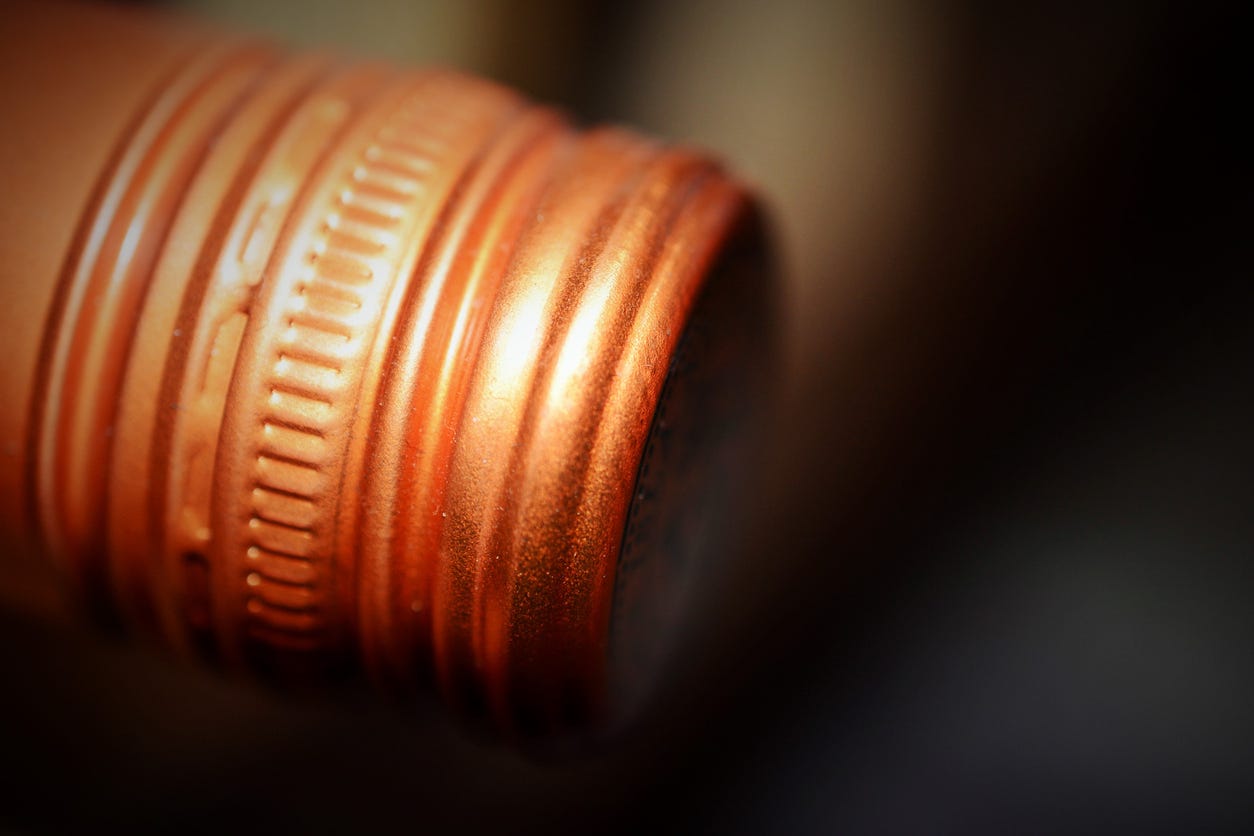While Ben and I are always keen to rabbit on about what goes into a bottle, we haven’t talk for a while about some of the more technical aspects that help keep your wine in perfect condition - both before and after you’ve opened the bottle. One of the most important of those is closures - a rather grand term for what gets put in the top of the bottle to stop the wine seeping out and oxygen getting in and spoiling the wine.
Now, when we talk about the seal on a wine bottle, cork is what people tend to think of first. That’s not surprising. There are records of natural cork being used to seal clay amphorae full of wine as far back as the Greeks and the Egyptians. But interestingly, cork’s place as the closure of choice was interrupted in the 8th century. At that time, most of Europe’s cork came from the Iberian Peninsula (it still does). And when the Moors invaded and took over most of what is now Spain and Portugal, cork supplies were disrupted, and thirsty northern Europeans had to find alternative ways to stopper their wine vessels.
Back then, wine was stored in, and often served directly from wooden barrels. So, it wasn’t too difficult to turn to wooden stoppers with things like cloth or wax to help seal up the barrels. In fact, these improvised bungs did the job adequately enough for several hundred years. But then in the seventeenth century glass bottles came along and, after some experimentation with elaborate glass stoppers, cork as the closure of choice began to make a comeback. And it’s been here ever since.
That’s not surprising. Cork is an ideal seal for wine. It’s light and flexible, and because it can be compressed and then expands inside the bottle, it provides a very good seal. It’s a natural product – cork comes from the bark of trees – so it’s biodegradable. And the production process is non-damaging to the environment. Furthermore, cork allows a certain amount of micro-oxygenation in the bottle, meaning wines can gently mellow and develop over time. So, all in all, cork is perfect as a wine stopper.
Freshly cut cork from the Alentejo region of Portugal
But it’s not without its problems. For a start, being a natural product, it’s susceptible to variations. Different manufacturers – and even different trees – can produce corks of varying quality. Which means winemakers face a bit of a lottery when it comes to buying corks. They also dry out over time. So, if you want to store a bottle of wine for a long period of time, you need to keep the cork in contact with the wine to ensure it doesn’t dry out and lose its sealing properties. It can be expensive as well – especially given that production is limited, and demand is growing every year. And there’s always the risk of cork taint (aka TCA), which can spoil a wine and make it smell mouldy like old, wet cardboard (for more on common wine faults, see our post ¨Waiter, what’s wrong with my wine?¨ from December 2024 ).
So, it’s not surprising that winemakers are increasingly looking for alternative methods to seal their wines. And nowadays there are a number of options they can turn to.
Closest to traditional corks are agglomerated corks. Here cork is produced in the standard way, but then ground into powder, cleaned to remove any compounds that may damage the wine – like TCA – and then moulded into cork shapes to be used in the same way as a normal cork. It sounds like a perfect solution, but you still have the issue of supply, quality can be a bit hit and miss, and most winemakers would only use these seals on wines that are going to be drunk very young.
Then we’ve got synthetic closures, often just referred to as plastic corks (if that’s not a contradiction in terms!). The first examples weren’t brilliant from a technological or sustainability point of view, but like most things the technology has improved enormously in recent years. For the cork nerds among us (guilty!) Nomacorc is the brand to look out for.
Then finally of course, we’ve got the screwcap. Now, wine people can get a bit sniffy about screwcaps, associating them perhaps with cheap supermarket plonk. But in fact, the technology is being refined all the time and some commentators predict that they will end up replacing cork altogether. Invented in the late 1950s, screwcaps really took off in the early noughties Down Under and believe it or not today they’re the seal of choice for 95% of all the wine coming out of New Zealand.
Screwcaps are becoming more and more popular
Screwcaps are inert, last for years and have the great advantage that they don’t require any equipment to get them off apart from your fingers. But there is still debate – this is the wine world, don’t forget! – about whether they are the best solution for wines destined for ageing.
Some argue that wine ageing is best carried out in an anaerobic environment, with no, or very little oxygen getting into the wine, which is something the screwcap, especially the ones with a tin-film liner, is very good at preventing. Others, however, take a different view and argue that the porosity of natural cork is a positive because it gradually brings the wine in the bottle into contact with the oxygen on the outside. This interaction allows tertiary aromas to develop in the bottle and, over time, helps the wine to become more complex, layered and interesting to drink.
The debate will no doubt continue for as long as there is a bottle of wine to be stoppered. And we certainly wouldn’t generalise as far to say there is only one right way of closing a bottle. The important thing is to be aware of what stopper is being used and think about why.
If you pop a plastic cork, you know you won’t have to worry about the wine being spoilt. And if your wine comes with a screw cap, don’t be put off. It doesn’t necessarily mean the wine is lower quality. It could just be that the winemaker has decided it is the best option for the wine they have produced. And rather destined for years in a cellar, it’s probably a wine that’s been made to drink now. Which, if you’ve got an empty glass beside you, is most definitely A Good Thing.
Cheers!







We forget that wine is merely a mid way pause on the journey from grape juice to vinegar.That journey is powered by oxidation.
Had an interesting online Coop tasting with Jean Claude-Mas who is very much in favour of screwcaps.His argument was that any oxidation is bad and if the wine was made properly in the first place,further oxidation was not needed.